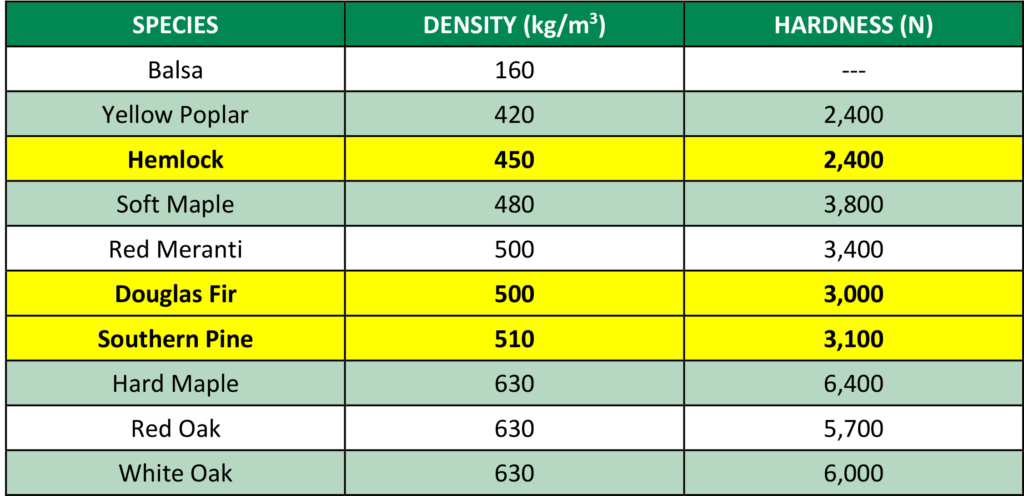One of the biggest myths in the lumber world is that softwoods are “softer” or weaker than hardwoods. Sounds logical, right? Not quite.
The truth is, the terms softwood and hardwood have nothing to do with strength or density — they’re based on how the trees grow and reproduce.
What Really Defines a Softwood or Hardwood
Here’s the real difference:
- Softwoods (conifers) come from trees that have needles and cones — like Southern Pine, Hemlock, and Douglas Fir.
- Hardwoods (deciduous trees) come from trees with broad leaves — like oak, maple, or birch.
So while the names might suggest one is weaker than the other, that’s not true at all. In fact, as testing shows, softwoods like Southern Pine are actually harder and denser than many hardwood species.
Why Density and Hardness Matter for Builders
That strength gives Southern Pine a serious edge in two major areas of construction and manufacturing:
Millwork and Furniture Manufacturing
Southern Pine’s high density makes it a favorite for machining, fastening, and finishing. It cuts cleanly, holds nails and screws tightly, and takes paint and stain beautifully.
You’ll find Southern Pine in:
- Mouldings and trim
- Ladder and stair components
- Door and window frames
- Both solid and upholstered furniture
Its strength and smooth finish make it a premium material for craftsmen and manufacturers who want performance and beauty.
Trusses and Structural Components
When it comes to strength-to-weight ratio, Southern Pine shines. Its density and stiffness make it the preferred lumber species for engineered building components like roof and floor trusses.
Trusses made with Southern Pine offer:
- Long spans with fewer materials
- Design flexibility
- Space for plumbing, wiring, and HVAC
- Faster, more efficient construction
Because of its strength, builders can even use smaller pieces of Southern Pine without sacrificing structural integrity — saving time, weight, and cost.
The Bottom Line
Softwood doesn’t mean soft — especially when it comes to Southern Pine. With its strength, durability, and versatility, it’s the natural choice for builders, manufacturers, and designers alike.
